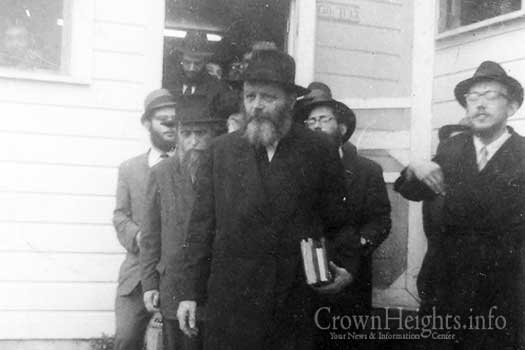
The Rebbe’s Call for Summertime Tznius (Pt. 2)
“Prior to the summer, the Rebbe would – almost annually – discuss the topic of Tznius,” says Crown Heights Mashpia Rabbi Michoel Seligson. At his suggestion, CrownHeights.info presents a weekly feature for the summer months: a short thought of the Rebbe on tznius, as compiled by Rabbi Seligson.
The following are excerpts from the Rebbe’s Sichos and the Hiskashrus Weekly, respectively.
“The time has arrived (before the summer) when we need to precisely discuss, precisely the matter of Tznius, and even more so the tznius of garments themselves; their length and that the material not be transparent, but rather a garment which covers and conceals. (Note: The Rebbe repeated the word “b’ikar”, translated here as precisely).
How vital is Tznius? This is understood from the commandment, ‘You should be holy, because I, G-d, your G-d, is holy’ (Kedoshim 25:2). When a Jewish person conducts himself with tznius, he has the potential to compare himself to the Almighty, to the sanctity of the Almighty.
As the Maggid of Meztritch explained, by comparing ‘You should be holy’ with ‘Because I, G-d, your G-d, is holy’, this teaches us that through “You should be holy” – by dressing modestly, we become closer and connect to “G-d, your G-d, is holy”.
This relates to both men and women, because the laws of tznius and long garments etc. are relevant to men and women alike.”
(12th of Tamuz 5723/1963 Sicha #10)
**********
A chossid in yechidus asked the Rebbe a question regarding dress length.
The Rebbe: “The longer, the better and more pleasing. I do not want to standardize a size as to how long it should be. Let the local Rabbonim make the decision. One Rav may require an additional centimeter; another may advise to add more centimeters.
But in my opinion it is definite that the minimum garment length while standing, should be long enough that the knees are fully covered when sitting.
Not because a non-Jew in France decided on a new dress style, do Jewish girls need to adhere and follow it.
The prutzim (those who break the law) found another option. They wear a long but tight dress, and that brings about that parts of the body which provoke the yetzer horo very strongly are emphasized, and this simply needs to be stopped.”
(Hiskashrus # 48, page 11 – Korach 5755/1995).













thank you!
beautiful to hear
Yaasher Koach
Thanks for sharing!
Koach
“This relates to both men and women, because the laws of tznius and long garments etc. are relevant to men and women alike.”
Do men also need to wear long sleeves – past the elbows, long pants – past the knees?
What does it mean “long garments” for MEN? Is it a kapoteh?!
Yes.
Yes. All of the above applies to men, but its not a requirement.
Milhouse
No, he’s talking about basic tznius, not a kapoteh.
Men’s sleeves do not have to cover the elbow, but they do have to come past the area where tefillin are put. I have not seen a halocho about whether shorts have to cover the knees, but they definitely have to come some distance down the thighs.
“The longer, the better"
Does that apply to sheitels too – “the longer, the better”?
no
14″ or 16″ is more then enough. any shaitel longer is es pasht em nisht- meaning its not 100% proper.
Milhouse
No, of course it doesn’t. Why would it. And with regard to skirts it also doesn’t mean that they should sweep the floor, it was said at a time when the fashion was for very short ones, and the only topic up for discussion was whether to go one centimetre below the knee or ten, but nobody was even contemplating 30 or more.
Doesn't anyone blush anymore?
For men, I think the Rebbe was referring to long kapotas not the short kapotas that are being worn today.
Men
The Rebbe was referring to part s of the body that need to be covered and not exposed,.
As he once mentioned in a Sicha (Winter 5741) that he received a pix of chassidim in bathing suits seem to be happy with themselves, and although they were not near swimming area.